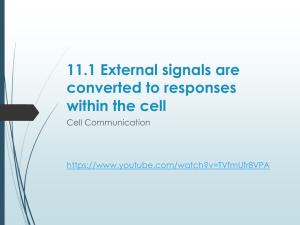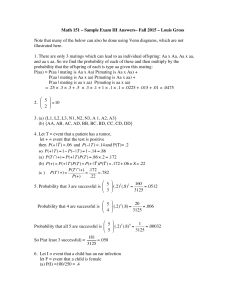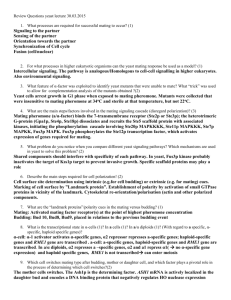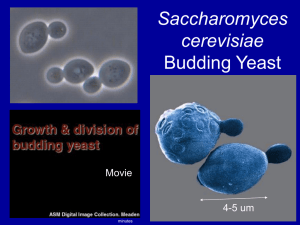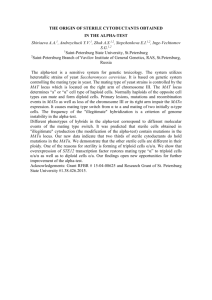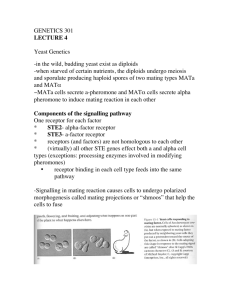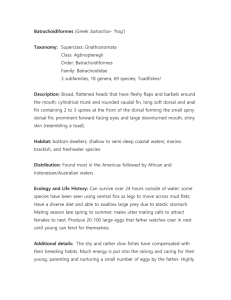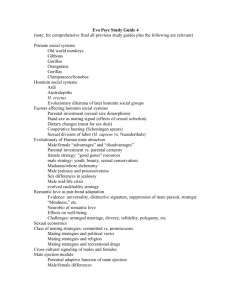Small scale Yeast Mating
advertisement
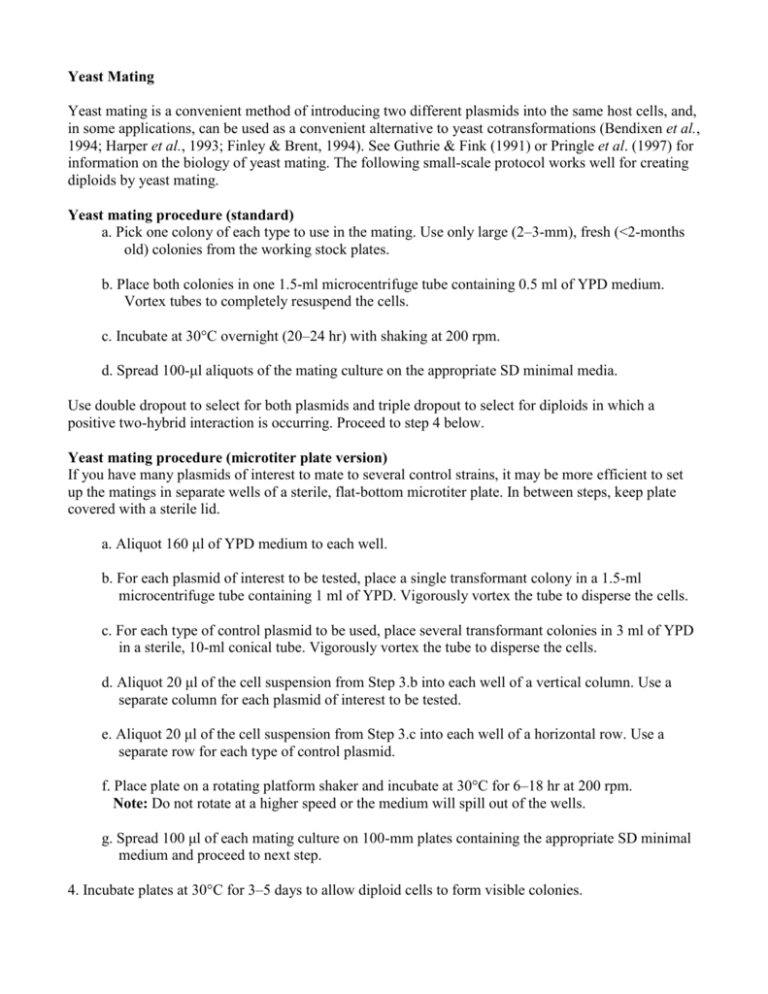
Yeast Mating Yeast mating is a convenient method of introducing two different plasmids into the same host cells, and, in some applications, can be used as a convenient alternative to yeast cotransformations (Bendixen et al., 1994; Harper et al., 1993; Finley & Brent, 1994). See Guthrie & Fink (1991) or Pringle et al. (1997) for information on the biology of yeast mating. The following small-scale protocol works well for creating diploids by yeast mating. Yeast mating procedure (standard) a. Pick one colony of each type to use in the mating. Use only large (2–3-mm), fresh (<2-months old) colonies from the working stock plates. b. Place both colonies in one 1.5-ml microcentrifuge tube containing 0.5 ml of YPD medium. Vortex tubes to completely resuspend the cells. c. Incubate at 30°C overnight (20–24 hr) with shaking at 200 rpm. d. Spread 100-μl aliquots of the mating culture on the appropriate SD minimal media. Use double dropout to select for both plasmids and triple dropout to select for diploids in which a positive two-hybrid interaction is occurring. Proceed to step 4 below. Yeast mating procedure (microtiter plate version) If you have many plasmids of interest to mate to several control strains, it may be more efficient to set up the matings in separate wells of a sterile, flat-bottom microtiter plate. In between steps, keep plate covered with a sterile lid. a. Aliquot 160 μl of YPD medium to each well. b. For each plasmid of interest to be tested, place a single transformant colony in a 1.5-ml microcentrifuge tube containing 1 ml of YPD. Vigorously vortex the tube to disperse the cells. c. For each type of control plasmid to be used, place several transformant colonies in 3 ml of YPD in a sterile, 10-ml conical tube. Vigorously vortex the tube to disperse the cells. d. Aliquot 20 μl of the cell suspension from Step 3.b into each well of a vertical column. Use a separate column for each plasmid of interest to be tested. e. Aliquot 20 μl of the cell suspension from Step 3.c into each well of a horizontal row. Use a separate row for each type of control plasmid. f. Place plate on a rotating platform shaker and incubate at 30°C for 6–18 hr at 200 rpm. Note: Do not rotate at a higher speed or the medium will spill out of the wells. g. Spread 100 μl of each mating culture on 100-mm plates containing the appropriate SD minimal medium and proceed to next step. 4. Incubate plates at 30°C for 3–5 days to allow diploid cells to form visible colonies.
